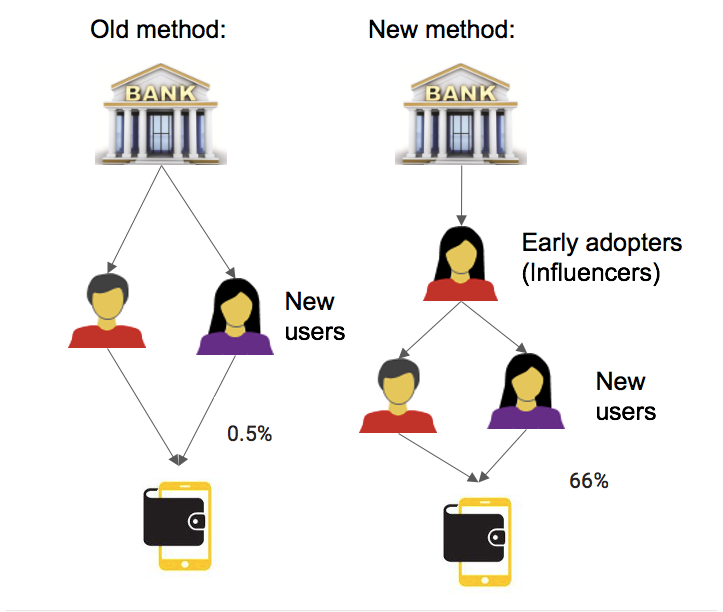Graph Powered Mobile Wallet Signup Campaign
Background
Bank Singapore (pseudonym, actual bank name disguised), one of the major banks in Singapore, has always been at the forefront of adopting cutting edge technology, having been awarded numerous times for its digital banking and digital transformation effort.
A few years back, witnessing the tremendous success of mobile wallets in China - Alipay and WeChat Pay, India - Paytm, MobiKwik, etc., Bank Singapore rolled out its very own mobile wallet to further its digital banking dominance.
With its existing customer base, Bank Singapore was able to make a good foray through SMS (text msg.) marketing promotion to the current customers with cash incentives. The initial campaign was successful and Bank Singapore’s mobile wallet quickly rose to become one of the top financial app downloads in Singapore.
Problem
Unfortunately, the effective take-up rate (SMS campaign take-up rate - Baseline take-up rate) of the campaign didn’t hold its ground and deteriorated from 0.69% to 0.45% to 0.05% over three campaign waves.
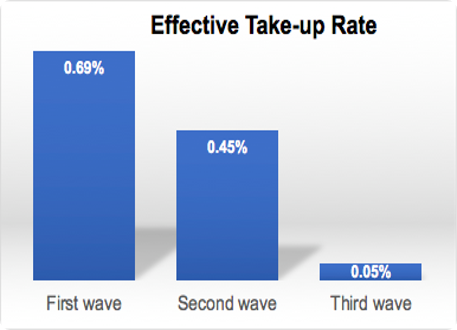
The team immediately conducted an investigation and identified several key drivers for the declining take-up rate:
Offer fatigue
Users were constantly bombarded with various cash incentive offers. During the same period, many competing download offers in the market ranging from S$20 to S$100. However, the bank had concluded raising the cash incentive didn’t make economic sense for them.
Do-not-call list
Many clients were on the do-not-call list. This reduced the number of accounts that the bank can send SMS to.
Lack of context in the marketing message
The marketing message was not customized to the individuals, therefore created less motivation for signing up. On the other hand, individualizing marketing creatives could drastically increase the cost of marketing campaigns.
Solution
Social network sites like Facebook, Twitter, LinkedIn, etc. have proven using influencers to create word of mouth campaigns brings about superior performance over generic campaigns.
With the help of LynxKite, data scientists of Lynx Analytics proposed a similar methodology using social network analysis (SNA) within the bank and identifying influencers from its internal network.
Instead of reaching out to potential users directly, the bank invites the early adopter(influencers) to offer the cash incentive to their network of friends and family.
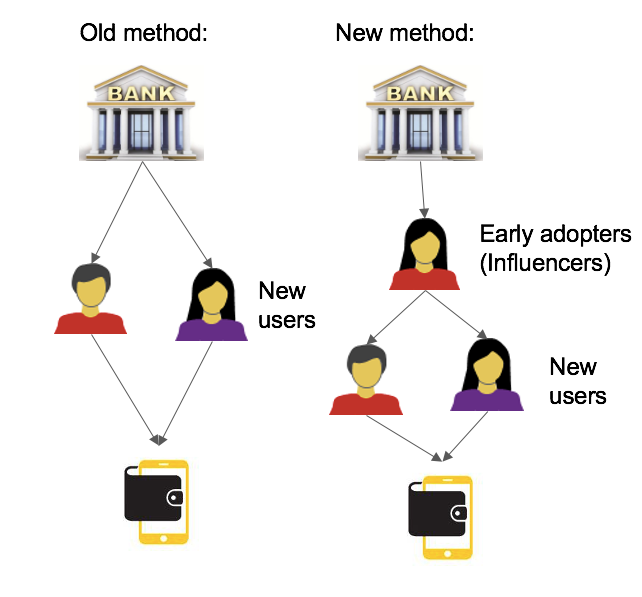
This method addresses two key challenges of the previous campaign:
- The cash incentive offer sent by the influencer is not subject to do-not-call restriction.
- When an offer is sent from friends and family, there is a better context, therefore reason for signing up.
How the internal social network is created
Using the graph construction capabilities of LynxKite, our data scientists first built a multi-layered account graph using events like: Giro transfer, history of sending cheques, splitting bills with credit cards, IB transfer, joint account, etc. as the links (edges) between the accounts (nodes).
Layering on top of the graph, different attributes like: whether in the do-not-call list, existing mobile wallet users, etc. were added to the accounts.
Then, we built a machine learning model to predict the probability for each account to sign up for the mobile wallet.
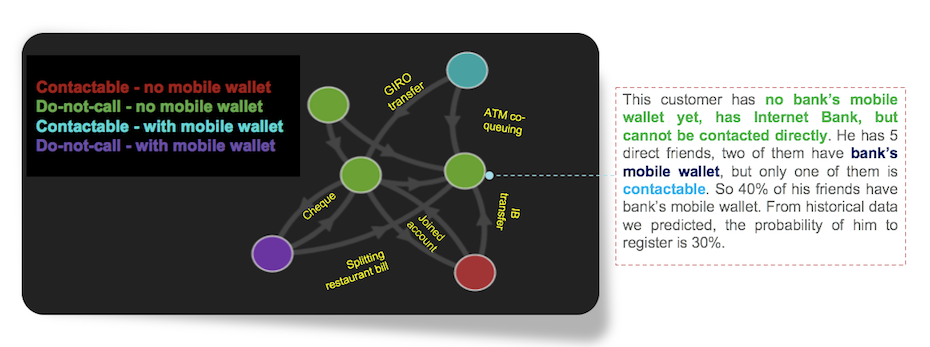
Identify the communities and influencers
With the graph created, using various graph algorithms in LynxKite, we were able to identify communities, therefore the influencers we could leverage to acquire new mobile wallet users with the right context.
For example:
- The SME-customer networks identified by graph algorithm: embeddedness. An SME owners can reach out to its customers to use the mobile wallet to pay the monthly fee.
- Sports groups identified by graph algorithm: clique. Members can encourage each other to sign up for sharing the cost of their activities.
- Families identified by graph algorithm: connected component. Members can use the mobile wallet sending money to each other for household matters.
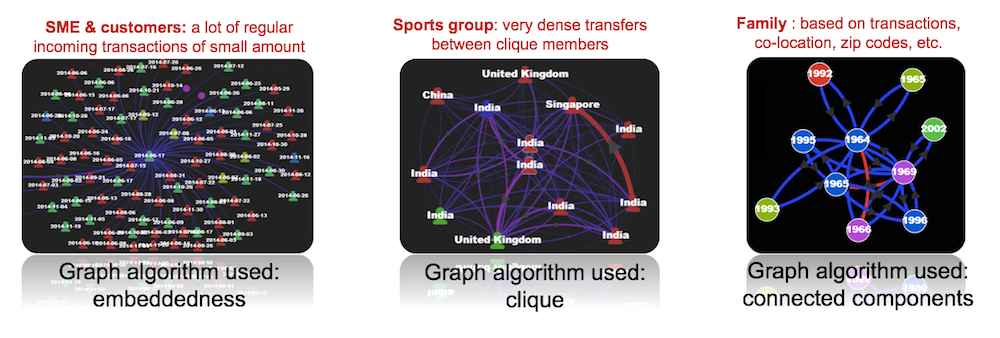
Outcome
Using the graph powered word-of-mouth campaign, the acceptance rate of the sign-up offer raised drastically from 0.5% to 66%. This allowed the continued growth of the mobile wallet accounts and the bank continues to have one of the highest mobile wallet subscriptions in Singapore.
